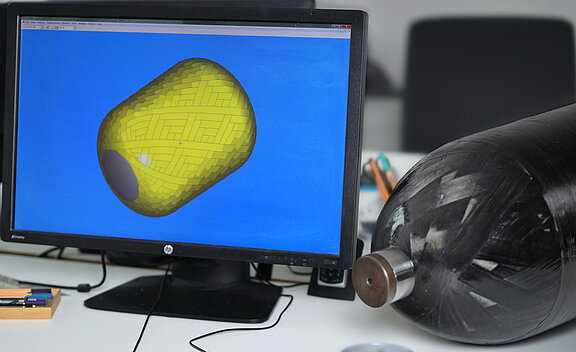CFRP/composite pressure vessel

The working pressures of pressure vessels made of fibre composite material range from 10 bar to 800 bar and burst pressures of around 2,000 bar.
ISATEC developed the special software ISAWIND for the design and calculation of these vessels and has used it successfully in a large number of projects. The software covers both the simulation of the manufacturing process and the calculation of the complex fibre composite structure, and also extends to the programming of CNC production machines. For detailed finite-element calculations of these vessels, an interface to ANSYS and LS-DYNA was developed.
It facilitates highly precise design with regard to required burst pressures. In addition, it is also capable of analysing the behaviour in prescribed drop tests. In cooperation with car manufacturers, crash simulation models are also developed.
In addition to the pressure-bearing shell, fibre-composite material pressure vessels consist of inner vessels (liners) and end pieces with valves. The inner vessels can serve as effective reinforcement, in which case they consist of metal. Non-reinforcing plastic liners provide advantages in terms of weight and cost. ISATEC is capable of calculating the complete design of a vessel, taking into account the interaction of shell, liner and end piece, and optimising it.
ISATEC is also deeply familiar with manufacturing and winding processes. In addition, the company has extensive experience in handling carbon, glass and basalt fibres in wet winding and towpreg processes as well as in handling thermoplastic materials. This means that required fibre quantities, cycle times and cost indicators can also be specified.
Pressure vessels are developed in accordance with guidelines such as ECE R110 for natural gas vessels and EC R 134 for hydrogen vessels. For special applications, in astronautics for instance, vessels are constructed according to special, customer-specific requirements.
Via CFD simulation, the filling of high-pressure hydrogen vessels can also be simulated realistically.
In addition to the actual vessels, racks and containers for complete tank and transport systems are also designed and computed. To this end, several individual vessels are arranged in special supporting structures and connected to each other via complex piping systems and safety fittings.